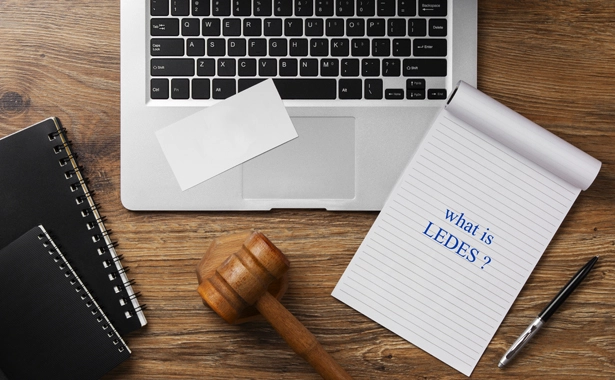Browsing the Dynamics of Status in Legal Systems: A Holistic Strategy
In the world of legal systems, the principle of condition quo holds a substantial role in shaping the structure upon which laws and guidelines are developed. By diving right into the elaborate interaction of numerous factors influencing the legal standing quo, one can reveal nuanced insights that pave the method for educated decision-making and strategic preparation.
The Value of Status Analysis
In legal process, performing a complete status analysis is critical to comprehending the existing state of events and giving a foundation for informed decision-making. This analysis includes a detailed evaluation of existing problems, arrangements, and conditions that form the context within which legal activities are being considered. By evaluating the status, lawyers can determine crucial stakeholders, responsibilities and legal rights, prospective dangers, and chances for resolution.
Additionally, delving into the status quo helps with the identification of any gaps or disparities that may exist, clarifying locations that call for interest or information. This process aids in establishing practical assumptions and establishing techniques that align with the prevailing conditions. Recognizing the status is important for developing a roadmap that overviews lawful process in the direction of effective end results while reducing unintentional consequences.
Inevitably, a careful condition quo analysis acts as a foundation for sound lawful recommendations and tactical preparation. It allows legal experts to browse complexities, prepare for difficulties, and customize their technique to achieve desirable results for their customers.
Aspects Influencing Lawful Status Quo
Considering the intricate internet of legislations, regulations, and social norms, what are the primary aspects that shape and affect the legal status quo in modern legal systems? Numerous essential factors play critical functions in identifying the lawful condition quo within a legal system. In addition, political dynamics and the equilibrium of power within a legal system can greatly influence the legal condition quo.
Techniques for Standing Quo Administration
Reliable management of the legal status requires a calculated technique that recognizes the vibrant nature of legal systems and the diverse factors affecting them. One key method for status administration is regular tracking and evaluation of legal advancements. This entails staying upgraded on brand-new laws, guidelines, and judicial choices that could affect the existing legal landscape. By proactively checking these changes, legal specialists can anticipate prospective difficulties and adapt their approaches accordingly.

Additionally, reliable communication and partnership amongst stakeholders are vital approaches for handling the standing quo in legal systems. By promoting open discussion and cooperation between policymakers, lawyers, and other appropriate parties, potential disputes can be attended to proactively, and remedies can be dig this developed collaboratively to preserve a secure lawful environment.
Difficulties in Status Adjustment

Additionally, the lack of clear guidelines for browsing status quo modifications can develop uncertainty and uncertainty. Lawful professionals commonly locate themselves in uncharted area when trying to challenge existing norms or incorporate brand-new lawful frameworks. This can result in hesitancy and unwillingness to drift from familiar practices, additionally restraining the adjustment process.
:max_bytes(150000):strip_icc()/quidproquo.asp-final-68d4c6cf51ff49aaae585b51d126a1a8.png)
Implementing Alternative Approaches
Including a comprehensive viewpoint into legal approaches is vital for addressing the diverse challenges of modern legal systems. Applying holistic techniques involves a shift in the direction of viewing legal problems as interconnected components of a larger system as opposed to separated cases. This requires a positive position that takes into consideration not only the instant lawful effects but also the wider social, financial, and ethical impacts of legal decisions.
One secret facet of implementing holistic methods is promoting interdisciplinary cooperation within lawful groups. By uniting professionals with diverse backgrounds such as legislation, psychology, economics, and sociology, a much more nuanced understanding of intricate lawful concerns can be attained. This joint strategy makes it possible for lawful practitioners to develop more effective techniques that represent a broad variety of elements influencing the outcomes of legal cases.
Furthermore, embracing technology and data-driven insights is crucial in implementing all natural strategies in lawful systems. Leveraging tools like artificial knowledge for lawful study, predictive analytics for instance end results, and data visualization for providing complex information can improve decision-making procedures and boost total legal results. By integrating these technical innovations right into legal technique, an extra alternative and effective technique to dealing with legal obstacles can be accomplished.
Conclusion
In verdict, browsing the dynamics of status in legal systems calls for a detailed understanding of the importance of status evaluation, the various variables affecting legal standing quo, effective strategies for condition quo management, and the obstacles in condition quo adjustment. Executing holistic techniques is important for efficiently adapting and handling to the status in legal systems. It is learn the facts here now crucial for lawyers to continuously review and adapt to the altering characteristics of the status quo to make sure reliable and effective legal results.
Considering the elaborate internet of regulations, policies, and social standards, what are the primary elements that form and affect the legal status quo in modern lawful systems? Numerous key aspects play critical roles in identifying the lawful standing quo within a lawful system. It is the interaction of these factors that collectively shape and affect the lawful standing quo in modern lawful systems.
Effective management of the legal condition quo needs a calculated strategy that recognizes the dynamic nature of legal systems and the varied aspects influencing them.In final thought, navigating the dynamics of condition quo in lawful systems needs a detailed understanding of the value of standing quo evaluation, the numerous variables affecting lawful standing quo, reliable approaches for standing quo monitoring, and the obstacles in standing quo adjustment.